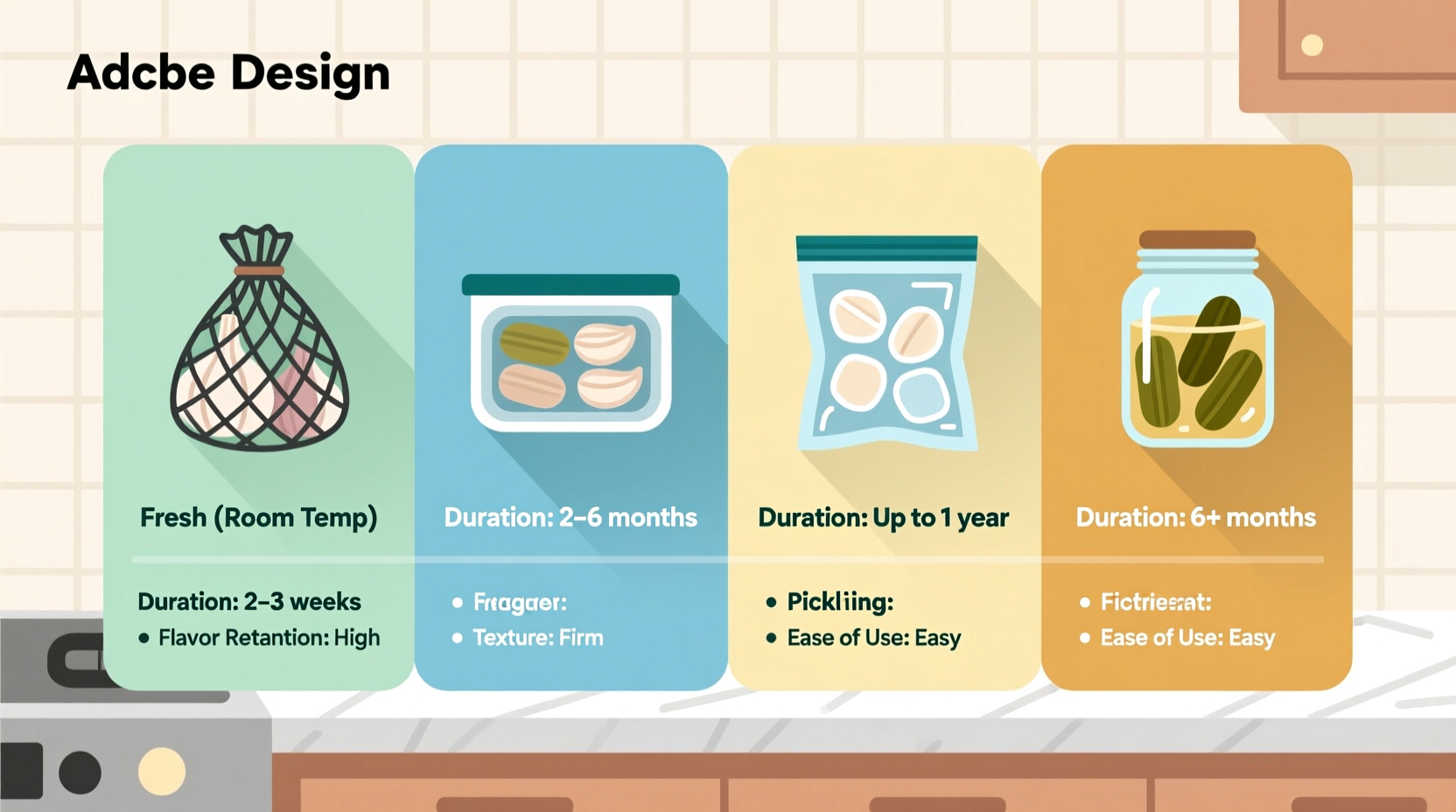Wasting precious garlic bulbs feels like throwing money away, especially when harvest season brings abundance. Whether you're a home gardener with a bumper crop or a savvy shopper who found garlic on sale, proper preservation techniques let you enjoy that fresh, pungent flavor year-round. This guide delivers professional chef-tested methods that maintain garlic's complex flavor profile while prioritizing food safety.
Why Proper Garlic Preservation Matters
Garlic transforms from a simple ingredient to culinary magic when stored correctly. Improper storage leads to sprouting, mold, or worst of all - potential botulism risk with oil preservation. According to the USDA Food Safety and Inspection Service, Clostridium botulinum spores naturally present in garlic can produce deadly toxins in low-oxygen environments like oil without proper acidification.

Freezing Garlic: The Simplest Solution
Freezing preserves garlic's fresh flavor better than any other method and requires minimal preparation. Professional chefs prefer this technique for everyday cooking needs.
Step-by-Step Freezing Process
- Peel cloves completely (freezing makes peeling difficult later)
- Place cloves in a single layer on parchment-lined tray
- Flash freeze for 2 hours to prevent clumping
- Transfer to airtight freezer bags, removing excess air
- Label with date and use within 10-12 months
For immediate cooking use, frozen garlic can be grated directly into hot pans. The National Center for Home Food Preservation confirms frozen garlic maintains 95% of its original allicin content - the compound responsible for garlic's health benefits and distinctive flavor.
Dehydrating Garlic: Long-Term Storage Champion
Dehydrated garlic offers remarkable shelf stability while retaining significant flavor. This method works particularly well for creating custom garlic powder.
Optimal Dehydration Technique
- Slice cloves uniformly (1/8 inch thickness)
- Arrange on dehydrator trays without overlapping
- Set temperature to 135°F (57°C)
- Dry for 8-12 hours until brittle
- Condition for 7 days in sealed jars before final storage
| Preservation Method | Shelf Life | Flavor Retention | Best Culinary Uses |
|---|---|---|---|
| Freezing | 10-12 months | 95% fresh flavor | Sautéing, roasting, sauces |
| Dehydrating | 1-2 years | 85% concentrated flavor | Rubbed on meats, spice blends |
| Oil Preservation | 4 weeks refrigerated | 90% flavor with oil infusion | Marinades, dressings |
| Pickling | 6 months refrigerated | 70% tangy flavor profile | Salads, sandwiches, garnishes |
Safe Oil Preservation: Avoiding Botulism Risk
Preserving garlic in oil creates delicious flavor infusions but requires strict safety protocols. The FDA Food Code mandates acidification to pH 4.6 or lower for any garlic-oil mixture intended for refrigerated storage.
Safe Preparation Protocol
- Peel and slice garlic cloves
- Combine with vinegar (5% acidity) in 1:1 ratio
- Let sit for 4 hours to properly acidify
- Add to clean glass container with olive oil
- Refrigerate immediately and use within 4 weeks
Never store raw garlic in oil at room temperature - this creates perfect conditions for botulism toxin production. Commercial products use pressure canning and precise acid levels that home kitchens cannot safely replicate.
Pickling Garlic: Flavorful Preservation
Pickled garlic offers a milder, tangy alternative perfect for salads and sandwiches. The vinegar environment naturally prevents spoilage while transforming garlic's flavor profile.
Quick Pickling Method
- Peel whole cloves or slice thinly
- Place in sterilized jar with 1 tsp pickling spice
- Pour boiling vinegar solution (50% vinegar, 50% water, 1 tbsp salt/sugar)
- Cool to room temperature then refrigerate
- Flavor develops fully after 2 weeks
Troubleshooting Common Issues
Sprouting garlic: Indicates aging but remains safe to eat - remove green sprout before use. Mold development: Discard entire batch - mold threads penetrate deeper than visible. Off-flavors: Usually from improper storage containers - always use food-grade glass or plastic.
Choosing Your Preservation Method
Select your technique based on intended use: freeze for cooking applications requiring fresh garlic flavor, dehydrate for spice blends, use acidified oil for immediate flavor infusion needs, and pickle for salad applications. Each method serves different culinary purposes while maintaining safety standards.











 浙公网安备
33010002000092号
浙公网安备
33010002000092号 浙B2-20120091-4
浙B2-20120091-4